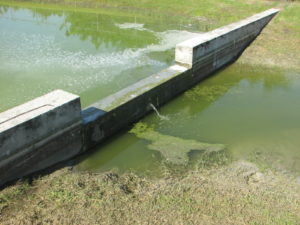 In our original blog article entitled “Florida NPDES Stormwater Requirements”, we provided an overview of these regulatory requirements. In this current article, we will provide more details on the monitoring itself. These monitoring requirements apply to stormwater runoff leaving your site. This may be a single outfall or more than one outfall. If there is no outfall, you may have to construct one to collect runoff to monitor.
In our original blog article entitled “Florida NPDES Stormwater Requirements”, we provided an overview of these regulatory requirements. In this current article, we will provide more details on the monitoring itself. These monitoring requirements apply to stormwater runoff leaving your site. This may be a single outfall or more than one outfall. If there is no outfall, you may have to construct one to collect runoff to monitor.
What is stormwater monitoring? It is the evaluation of the water leaving your site as stormwater runoff. To perform this evaluation, a sample must be collected. The evaluation may either be done visually or analytically in a laboratory. Your permit may just require visual monitoring for all five years of your permit, or it may require that in years one, three, and five, plus analytical monitoring in years two and four. Note that Florida Department of Environmental Protection (FDEP, www.myflorida.com) uses calendar years, so that if your permit is issued anytime between January 1st and December 31st in a given year, that is counted as year one. Thus, year two of your permit will start January 1st of the next year, even though a full year (i.e., 365 days) has not passed.
Regardless of the type of monitoring, you must measure and keep a log of rainfall on site. This has to be done prior to the beginning of the quarter so you can identify the last qualifying rainfall event and it continues until you monitor a qualifying event in the current quarter. A qualifying rainfall event is greater than one-tenth of an inch (0.1 in). For monitoring, the event has to be preceded by no qualifying events within 72 hours. Measuring rainfall can either be done manually or automatically with a tipping rain gauge recording unit.
Visual monitoring is done by collecting a sample in a clean glass container (clear and at least sixteen ounces is best). The sample is then examined for clarity, sediment, oily sheens, other pollutants, and foam. All information should be recorded on a form in your Storm Water Pollution Prevention Plan (SWPPP). Included with the sample evaluation data are the Sampler’s name and signature, date, time, start and stop times of the runoff event, and location of the outfall sampled. This form must be kept in the SWPPP.
Analytical monitoring will be dictated by your permit. The pollutants or parameters to be analyzed in the laboratory will be identified. Additionally, the regulatory limits for each parameter will be shown. It is important that the analyses be done in a laboratory accredited by National Laboratory Environmental Accreditation Program, NELAP (www.nelac-institute.org) and be certified by the Florida Department of Health (www.floridahealth.gov). The same information concerning the visual sampling above is recorded and a Chain-of-Custody form is completed to accompany the samples to the laboratory. This information and the lab results are kept in the SWPP.
Samples for laboratory analysis must be handled properly to insure accurate results. The samples may need to be preserved or iced or both. If they are not delivered immediately to the laboratory, they must be held in a refrigerator at no more than forty degrees Fahrenheit where the temperature is recorded on a written log daily. Samples must be analyzed before their hold time expires.
The visual and analytical results must be evaluated. If there is a problem, you must determine the likely cause and take corrective action. This should be documented in your SWPPP and, for analytical results, on your Discharge Monitoring Report (DMR) filed with the FDEP by March 1st following the monitoring year.
 So now you know details on Florida NPDES Stormwater Monitoring for industrial facilities. If you need any more information, Environmental Safety Consultants (www.escflorida.com) can assist. We have the credentials and experience to answer your questions and steer you in the right direction. We are a Florida-licensed Engineering business with over thirty-five years of stormwater experience. We are just a telephone call (800-226-1735) or an e-mail away here. Contact us today!
So now you know details on Florida NPDES Stormwater Monitoring for industrial facilities. If you need any more information, Environmental Safety Consultants (www.escflorida.com) can assist. We have the credentials and experience to answer your questions and steer you in the right direction. We are a Florida-licensed Engineering business with over thirty-five years of stormwater experience. We are just a telephone call (800-226-1735) or an e-mail away here. Contact us today!
